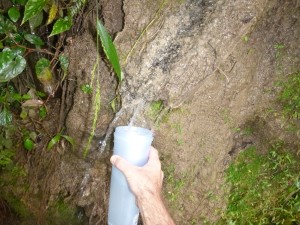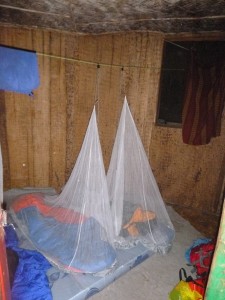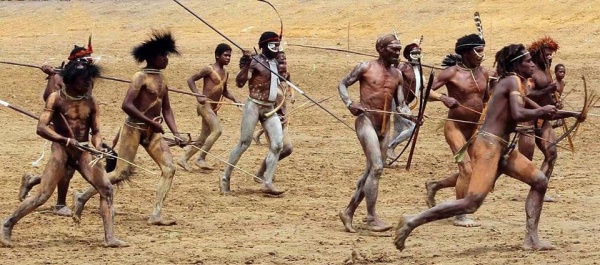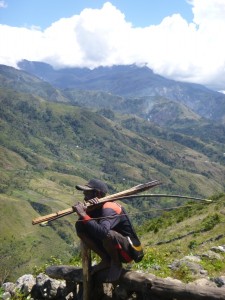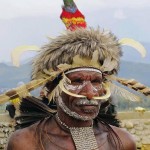 Let’s start with the basics. The island of New Guinea is the 2nd largest island in the world and is currently divided between two countries, Papua New Guinea to the east and Indonesia to the west. Most of the islands’ attention goes to the Papua New Guinea side, however here we are only talking about the Indonesian side.
Let’s start with the basics. The island of New Guinea is the 2nd largest island in the world and is currently divided between two countries, Papua New Guinea to the east and Indonesia to the west. Most of the islands’ attention goes to the Papua New Guinea side, however here we are only talking about the Indonesian side.
The Indonesian side of the island of New Guinea is again divided into two provinces, West Papua and Papua. Although over the years they have gone through many names (formerly known as Irian Jaya). In this article we are only focusing on Papua and the Baliem Valley, as this is where the bulk of the trekking is.
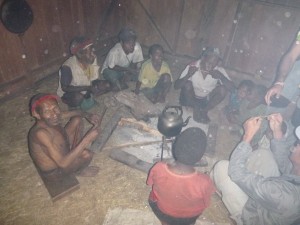 HOW DO I GET TO BALIEM VALLEY?
HOW DO I GET TO BALIEM VALLEY?
The standard way goes like this. Once you enter Indonesia (Usually through Jakarta or Bali) you will fly to Jayapura, the capital of Papua. From Jayapura you can take a one-hour flight to Wamena. Wamena is where all your Baliem Valley treks start and finish.
WHAT TRIBES ARE IN THE BALIEM VALLEY?
The Baliem Valley is home to the Dani tribe. If you continue west you will reach the Lani tribes, and if you continue east you will reach the Yali tribes and (eventually) the Mek tribes. South of Baliem Valley you will find the Korowai, Kombai and Asmat.
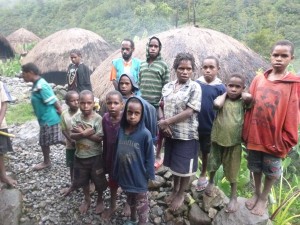 WHERE IS THE BEST TREKKING IN THE BALIEM VALLEY?
WHERE IS THE BEST TREKKING IN THE BALIEM VALLEY?
Three major roads traverse the Baliem Valley. From Wamena they go southeast, west and north.
The best trekking is where the southeast bound road ends. The road ends in Kurima and trekking begins in either Kurima or Sogokmo. Once the road ends the hillsides get steep and the culture gets more traditional. From here the only way in or out is by walking.
It is often said that villages do NOT get more traditional the further in you trek. This is because airstrips are scattered all around the central highlands of Papua. As a result you can go as far or as close as you like and still get a good experience.
The road west goes all the way into Lani country. It is often said that it is less scenic and less traditional. Therefore fewer tourists have a reason to go there. This might be a good way to get “off the track”, however expect the culture to be a bit more modern (houses, cloths, lifestyle).
The road north goes past a few important Baliem Valley sites, the most important of them being the famous 200-year-old Mummy. There are some nice trails leading out of villages along the main road.
Unfortunately Papuan food leaves a lot to be desired. In the traditional Dani areas you will typically only find sweet potatoes and packaged noodles. So it’s a good idea to bring some food with you. I recommend bringing noodles, packaged cookies, and instant coffee.
You can get drinking water from nearby streams, although you probably will want to purify this in some way. Also, you can ask for boiled water in many villages, but this is never fast or plentiful enough.
Most villages have a guesthouse of some kind that you can stay in and many of them have some sort of pad you can sleep on. Worst-case scenario, they give you just a hard wooden floor. If they are not set up to host, it’s likely they will find room for you somewhere anyway.
CAN I GO TREKKING INDEPENDENTLY (WITHOUT A GUIDE)?
Yes, but you would inevitably get lost and end up wasting a lot of time and energy walking aimlessly around the jungle on tiny hard-to-see paths. That does not mean that I am suggesting you join a tour group and get chauffeured to each village on their list, because there is a better way.
Definitely hiring a guide in Wamena or online will make your trek move more smoothly. And if you don’t feel like putting up with the headaches of independent travel, then this is the way to go.
Although, if you’d like to trek in Baliem Valley independently, this is what I suggest.
- Stalk up on candy, food, cigarettes and small bills in Wamena
- Take a bemo, ojek or hitch to Kurima or Sogokmo
- From either Kurima or Sogokmo begin your trek (without a guide)
- Ask for directions every chance you get
- Hire a local guide (or a Porter) in each village for your trek to the next village. This will save you tons of money. Sometimes you can even get a village kid to take you for some candy.
- Download an offline Indonesian language translation app, to help with dealing with prices
- Download Maps.Me with the offline Indonesia map. Its not complete but hey, nothing for this area is.
THINGS TO BRING:
- Sleeping Bag (not a pad, its just extra weight and most places have them)
- Good Hiking Shoes
- Mosquito Net
- Rain Poncho
- Flashlight/Torch
- Water Purification System
- Food:Â Packaged Noodles, Candy, Packaged Cookies, Cigarettes, Coffee
- Hat and Sunscreen
- Walking Stick:Â You can find this along the way
NEED A MAP?
Here’s a semi detailed map of the most popular trekking area in the Baliem Valley and Central Highlands. Â Feel free to print this out and take it with you, but you shouldnt use this as your only guide to the area. Â It would also be a good idea to download the free offline maps-app, MAPS.ME. Â This can track your progress along the trek by using your phone’s GPS while your data is turned off.
PAPUA TRIBES:
Within Papua you can visit the following tribal areas. Although in this article we are only focusing on the Dani Tribe, as they inhabit the Baliem Valley area.
- Dani Tribe:
- Yali Tribe:
- Mek Tribe:
- Lani Tribe:
- Korowai and Kombai Tribes:
- Asmat Tribe:
- Mambaramo Tribes:
IS PAPUA SAFE?
Yes, usually Papua is safe to travel to. But as always check current conditions as there is sometimes fighting between the indigenous people and their Indonesian overlords. For example when we were there fighting broke out in Kurima, postponing our trek and altering our course. It happens.
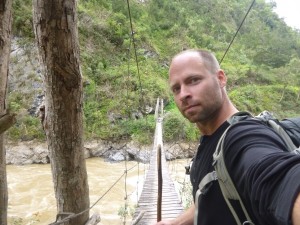 WHAT IS A SURAT JALAN AND HOW DO I GET ONE?
WHAT IS A SURAT JALAN AND HOW DO I GET ONE?
Surat Jalan is an Indonesian travel permit issued for travel around Papua. It is free and usually takes an hour to get. You should be able to produce two passport sized headshots, a passport, and a photo copy of your passport and Indonesian Visa just in case they are unable to scan your passport while you are there.
The Surat Jalan is then presented to each police station in each village that you stay in. This may be a way for them to track you down when you go out trekking by yourself, slip on a rock and break your leg.
DO I NEED TO SPEAK INDONESIAN?
No, however traveling around the Baliem Valley without speaking Indonesian is difficult…even in Wamena or Jayapura. For many of the people here, their first language is their local tribal language and their second language is Indonesian. So speaking English would mean that they are now on their third language. It’s not very common.
However, you can usually get around by simply saying the names of towns and villages as well as a few names of food items that you like. For me it was comparable to West Africa or China in terms of language difficulty.
Sure, we’d all love to be the first foreign face that an isolated group of villagers has ever seen but I’m sorry to say that those days are long gone. Yes, even for the lost island of New Guinea. So is it touristy? Well, by most standards…. no. There are no luxury hotels, ticket takers or entry fees. However you will hardly be the first outsider to step foot there.
To give you an example on actual numbers, the village of Syosimo, which is on many tour routes, saw about 50 tourists in 2015 (based on the village ledger). The vast majority of those tourists were in the months of February, July and August.
You will notice that there are certain villages that are on the usual tour group routes, and they act accordingly selling souvenir, asking for “gifts”, charging inflated prices and even putting on a show or two. However you will also notice that if you can break away from the normal route you will find villages that are much more friendly and authentic. Although this is not always so easy. Tourists complaining that Papua is too touristy probably did not get away from the standard tourist route.
So yes, anywhere that is interesting and accessible other tourists have been. This includes all of the tribes mentioned above.
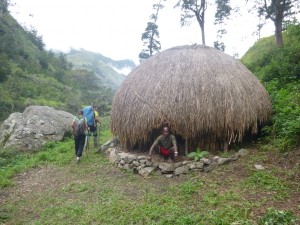 ARE THE TRIBES IN PAPUA STILL TRADITIONAL?
ARE THE TRIBES IN PAPUA STILL TRADITIONAL?
The trick is to adjust your expectations. No, you will not find lost tribes of headhunting cannibals. BUT aside from the loss of a few traditions (head-hunting, cannibalism, finger-cutting) and the adoption of western clothing, most villages still live a very simple and traditional lifestyle. For example, many still live in thatched huts, eat primarily sweet potatoes, speak their native tongue and are mostly self sufficient.
A general rule applies. Where there is transportation links (roads and runways), there will be change and a loss of traditional culture. In Papua, like anywhere else the traditional areas are where there are no roads. To put it another way, you need to trek there.
SUMMARY:
The hardest part about trekking in the Baliem Valley (or anywhere in Papua) independently is probably the planning. Arriving in Wamena and realizing there is very little information and even fewer English speakers can make it hard. I’m not aware of any travel agencies in Wamena and most hotels don’t speak much English. Every map you will find is slightly different and incomplete.
The best resource in town is probably still the Internet cafe (Papua.com). Here you can get a printed map of the entire Baliem Valley and maybe even some information on the area from the owner. Do NOT use this map as your only map. Download the offline Indonesia map for Maps.Me and take a copy of the map provided here.
Enjoy!

